20+ SAMPLE Quality Strategic Plan
-
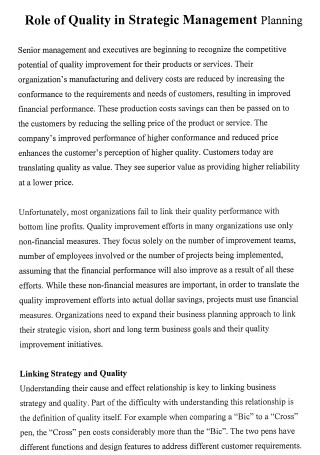
Quality Strategy Management Plan
download now -
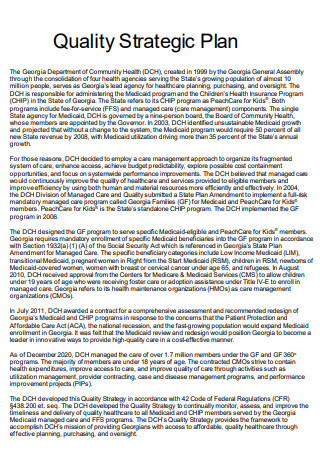
Quality Care Strategy Plan
download now -
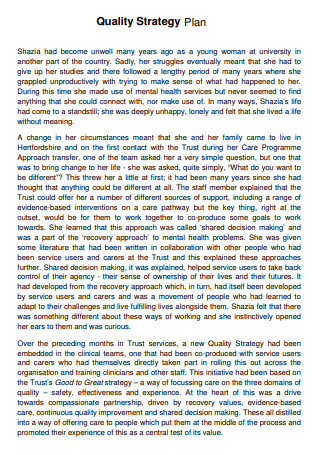
Quality Strategy Plan
download now -
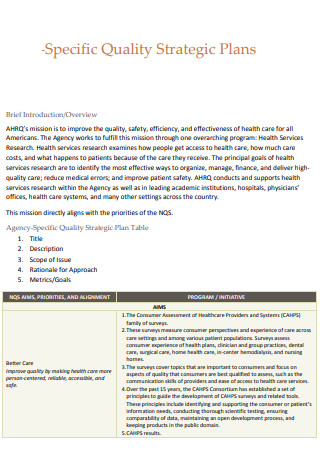
Specific Quality Strategy Plan
download now -

Expansion Quality Strategy Plan
download now -
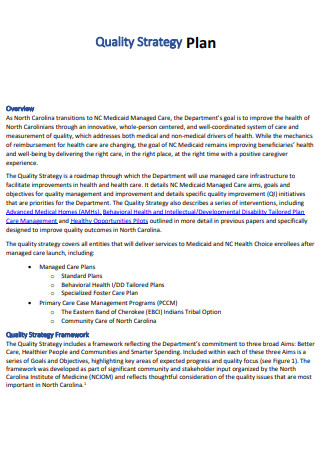
Sample Quality Strategy Plan
download now -

Medical Quality Strategy Plan
download now -
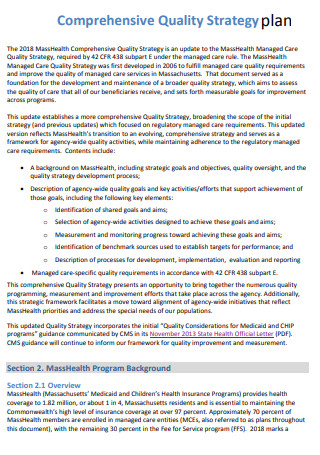
Comprehension Quality Strategy Plan
download now -
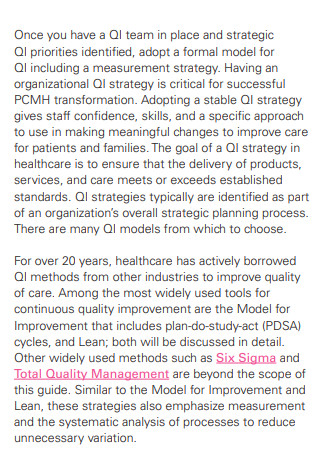
Quality Improvement Strategy Plan
download now -
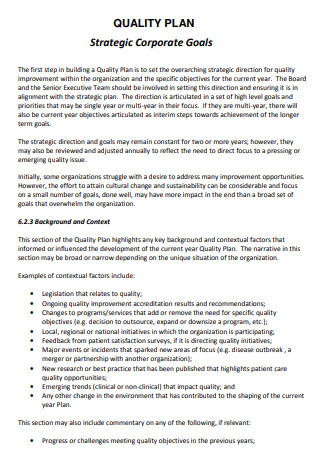
Quality Strategy Corporate Plan
download now -
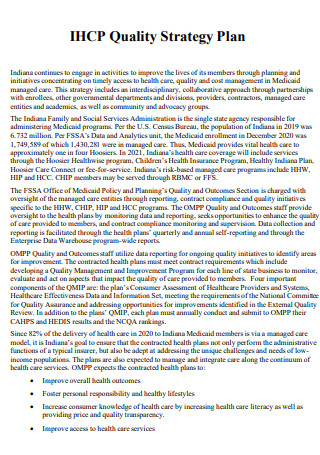
Health Quality StrategyPlan
download now -

Medical Assistance Quality Strategy Plan
download now -
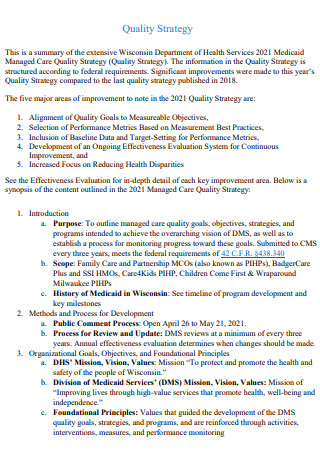
Data Quality Strategy Plan
download now -
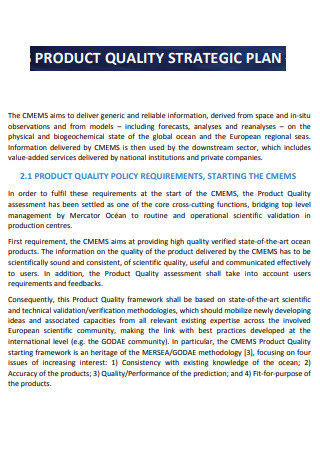
Product Quality Strategy Plan
download now -
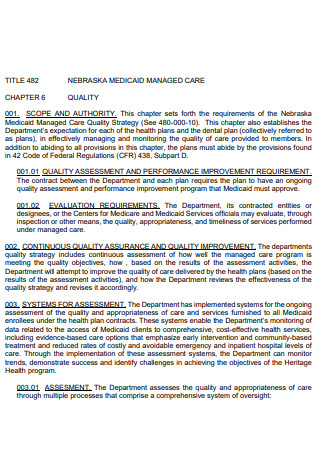
Quality Strategy Plan Example
download now -

Quality Policy Strategy Plan
download now -
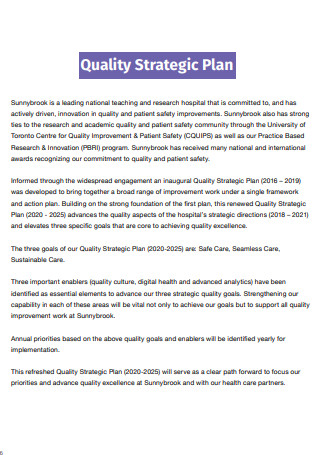
Quality Strategy Plan Template
download now -

Standard Quality Strategy Plan
download now -
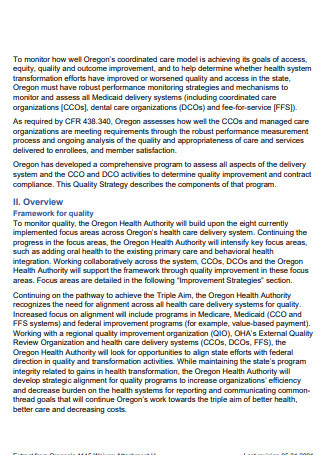
Quality Strategy Action Plan
download now -
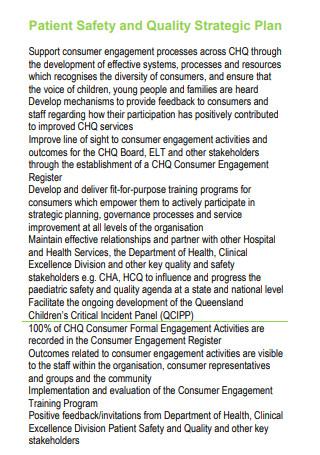
Patient Safety and Quality Strategic Plan
download now -
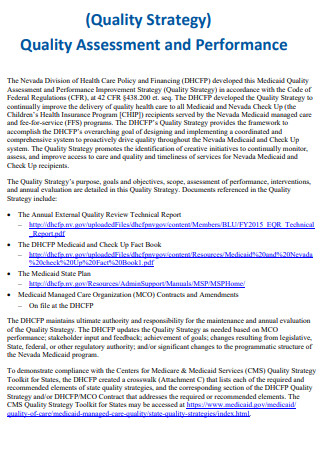
Quality Assesment Strategic Plan
download now
FREE Quality Strategic Plan s to Download
20+ SAMPLE Quality Strategic Plan
a Quality Strategic Plan?
Elements of Effective Quality Strategy
Benefits of Strategic Planning
How To Process Quality Strategic Planning
FAQs
What is the definition of quality strategy?
Why would you want a high-quality strategy?
What is a strategy operation that is agile?
What Is a Quality Strategic Plan?
Quality strategic planning is a systematic technique to develop quality assurance and improvement plans at the highest levels of an organization and connect them to its business strategy. Historically, quality strategic planning was considered a distinct activity from strategic business planning because quality planning was traditionally conducted at the lowest levels of the firm. As customer-driven quality and operational performance excellence became critical business drivers, quality improvement targets such as boosting customer satisfaction, reducing defects, and shortening cycle times began to garner the same level of attention as financial and market objectives. Excellent strategic planning is viewed as an inherent part of strategic business planning rather than a specific activity. Numerous studies have indicated that most strategic planning efforts fail by as much as 67 percent. This is partly because the typical approach to strategic planning is entirely backward.
Elements of Effective Quality Strategy
LNS defined the market’s present level of quality maturity, outlined the path to adulthood, and measured the operational and financial benefit of both maturity and specific best practices in the Supplier Quality Management (SQM) research. Quality leaders have used this study to acquire executive sponsorship, foster a quality culture and encourage cross-functional collaboration. Receiving top management sponsorship is not the trip’s conclusion; it is the beginning of another. Once you have convinced top management of the value of quality management, they want it now. The constant changes and even the most meticulously planned plans will require significant revisions upon executive sponsorship. Expect to craft a quality sponsorship strategy carefully and then re-craft it as you understand what the sponsor wants. Here are some pointers for developing and communicating a successful quality strategy:
Benefits of Strategic Planning
While many organizations recognize the value of strategic planning and invest significant time and money in developing one, it is still reviewed just once a year, if at all, or worse – a glossy paper that stays on the shelf! You may be wondering whether it is worthwhile to engage in a strategic planning process. There are numerous advantages to strategic planning. The secret to effective strategic planning is to incorporate measures and execution procedures that enable you to engage your personnel and monitor results regularly. The following are the top five advantages of strategic planning:
1. It enables enterprises to take a proactive stance rather than a reactive one.
A strategic plan enables companies to anticipate and plan for the future. Businesses can predict specific unfavorable scenarios and take necessary actions to avoid them through strategic planning. With a good strategic plan in place, firms may take a proactive stance rather than reacting to events as they occur. Being proactive enables firms to stay current with shifting market trends and constantly be one step ahead of the competition.
2. It establishes a sense of orientation.
A strategic plan assists an organization in defining its direction and in developing realistic objectives and goals that align with the business’s vision and mission. A strategic plan provides a company with the necessary framework for growth, evaluation of success, compensation of personnel, and establishing boundaries for effective decision-making.
3. It improves operational effectiveness.
A strategic plan works as a road map for management to align the organization’s functional activities to accomplish specified goals. It facilitates management conversations and decision-making in evaluating the resources and budget needs necessary to fulfill set objectives, boosting operational efficiency.
4. It can help a business become more resilient.
Business is an edgy notion. A business may thrive one year and bankrupt the next. With sectors and global marketplaces continually evolving, firms that lack a strong foundation, focus, and vision will struggle to ride the next wave. According to studies, one in every three sector leaders may not be around in five years, yet the chances are stacked in favor of those with an excellent strategic plan!
5. It contributes to the expansion of market share and profitability.
By developing a focused strategic plan, organizations can gain significant insights on market trends, consumer categories, and product and service offerings that may affect their success. A targeted and well-planned approach that maximizes the effectiveness of all sales and marketing initiatives can assist boost profitability and market share.
How To Process Quality Strategic Planning
Few notions appear to be as unsettling to today’s internal communication professionals as quality strategic planning. Many communicators view the process as lengthy and complicated and wonder where to begin. What is required? How can I contribute to the process’s success, and how will I measure it? Effective strategic planning may be simple, efficient, and even enjoyable, offering a roadmap to guarantee your efforts have the immense impact possible. The steps for processing it are outlined below.
Step 1: Ascertain your strategic stance.
This phase of preparation lays the groundwork for the remainder of the job. You must first determine your current location to determine where you need to go and how you will get there. Include the appropriate stakeholders from the start, taking into account both internal and external sources. Identify critical strategic concerns by speaking with executives at your firm, gathering consumer insights, and compiling industry and market data to gain a clear picture of your market position and customer perceptions. Additionally, it might be beneficial to evaluate — or establish — your company’s purpose and vision statements to provide yourself and your team with a clear picture of what success look like for your organization.
Also, it will help if you analyze your company’s basic principles to remind yourself how your organization will accomplish these goals. To begin, analyze industry and market data, including customer insights and current/future demand, to identify critical challenges. Create a list of your organization’s internal strengths and shortcomings, as well as external opportunities and dangers. Utilize a SWOT analysis as a foundation for your initial analysis. You may easily categorize your findings as Strengths, Weaknesses, Opportunities, and Threats (SWOT) to define your present position with input from executives, customers, and external market data. PEST analysis is an alternative to SWOT analysis.
Step 2: Prioritize your goals.
After determining your present market position, it’s necessary to establish objectives that will assist you in achieving your goals. Your purposes should be consistent with the mission and vision of your organization. Objectives should be specific and quantifiable to assist you in completing the long-term strategic goals and activities defined in step one.
Among the possible aims include upgrading website content, increasing open email rates, and generating new leads. SMART goals are beneficial for establishing a timeframe, identifying the resources required to accomplish the plans, and developing key performance indicators (KPIs) to quantify your progress.
Step 3: Create a strategy.
Now is the time to produce a strategic plan for achieving your objectives. This step entails deciding the techniques necessary to accomplish your goals, establishing a timeframe, and communicating roles and duties. Strategy mapping is a helpful technique for visualizing the entirety of your plan. From the top-down, strategy maps simplify visualizing company operations and identifying areas for change.
Indeed strategic decisions frequently entail a trade-off in terms of opportunity cost. For instance, your business may opt to provide fewer funds to customer service to invest more in developing an intuitive user experience. Prepare to utilize your values, mission statement, and stated priorities to say “no” to activities that will not help you achieve your long-term strategic objectives.
Step 4: Carry out and oversee the strategy.
Once you’ve developed a strategy, it’s time to put it into action. To begin, inform the organization about the plan by distributing pertinent documentation. After then, the actual job begins. By mapping your processes, you may convert your broad strategy into a detailed plan. Utilize KPI dashboards to communicate team roles. This thorough approach demonstrates the completion process and assigns ownership at each stage. Establish regular evaluations with individual contributors and their superiors and establish check-in points to ensure progress is being made.
Step 5: Conduct a review and revision of the plan.
The third stage of the plan—review, and revision—allows you to reassess your goals and make course corrections based on previous successes or failures. Discover which KPIs your team has met and how you can continue to fulfill them quarterly, changing your plan as necessary. It is critical to reevaluate your priorities and strategic position yearly to ensure that you remain on course for long-term success.
Balanced scorecards help you keep track of your progress and execute strategic goals by providing a holistic view of your business’s performance. Over time, you may discover that your purpose and vision need to be adjusted – an annual evaluation is an excellent opportunity to examine those adjustments, develop a new strategy, and re-implement.
FAQs
What is the definition of quality strategy?
A quality strategy is an overall system and process that integrates quality assurance and quality improvement activities into all facets of an organization’s or system’s operations.
Why would you want a high-quality strategy?
Without a well-defined strategy, your product is unlikely to be of high quality. Poor software quality is rather difficult to maintain, and it may result in the loss of your most valuable assets to a more reputable organization. Assemble a company with a reputation for developing high-quality software.
What is a strategy operation that is agile?
Agile strategic management continuously develops and fine-tunes strategies, products, services, and operations in response to real-time data and new insights. It necessitates that everyone is actively engaged in receiving and adjusting live input. It utilizes the best ideas contributed by others. Together to plan and execute.
The quality strategic planning process will help your business transition from making quality assumptions to developing clear quality directives based on well-researched quality strategies. This, in turn, will ensure the prosperity of your firm in the future.
